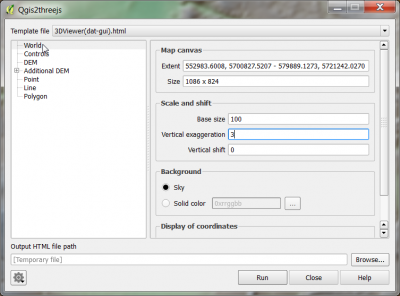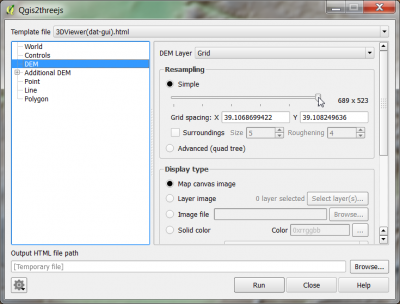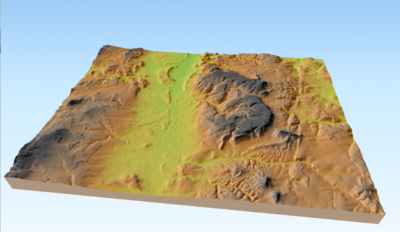Talk:Using Qgis2threejs
From AWF-Wiki
(Difference between revisions)
| Line 1: | Line 1: | ||
| − | The Qgis2threejs plugin visualizes | + | The Qgis2threejs plugin visualizes raster and vector data in 3D on web browsers. Files are generated which can be published in the web in a very simple procedure. |
* Prepare a [http://wiki.awf.forst.uni-goettingen.de/wiki/index.php/Digital_Elevation_Model_(DEM)_Processing#Shaded_relief_layer_styling shaded relief layer]. | * Prepare a [http://wiki.awf.forst.uni-goettingen.de/wiki/index.php/Digital_Elevation_Model_(DEM)_Processing#Shaded_relief_layer_styling shaded relief layer]. | ||
* Select {{mitem|text=Plugin --> Manage and install plugins}} and install the {{typed|text=Qgis2threejs}} plugin. | * Select {{mitem|text=Plugin --> Manage and install plugins}} and install the {{typed|text=Qgis2threejs}} plugin. | ||
Revision as of 09:02, 16 April 2018
The Qgis2threejs plugin visualizes raster and vector data in 3D on web browsers. Files are generated which can be published in the web in a very simple procedure.
- Prepare a shaded relief layer.
- Select Plugin --> Manage and install plugins and install the Qgis2threejs plugin.
- Web --> Qgis2threejs --> Qgis2threejs. Click on World and increase the Verical exaggeration to 3.
- Click DEM. Specify the source of the digital elevation model. Increase the spatial resolution: drag the slider in Resampling to the right.
- Click Run. Your default web browser will be opened and an interactive 3D view wit the extent of the current map canvas will be displayed.
- In the settings window click Controls to find out the interactive mouse functions.


